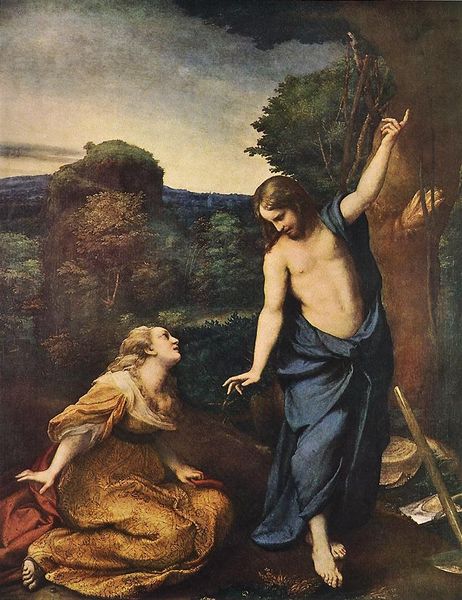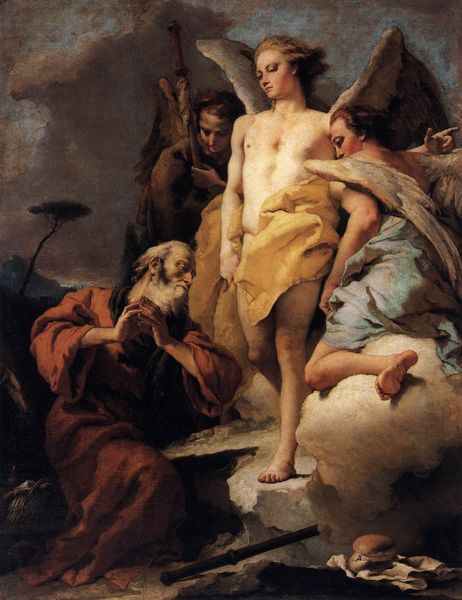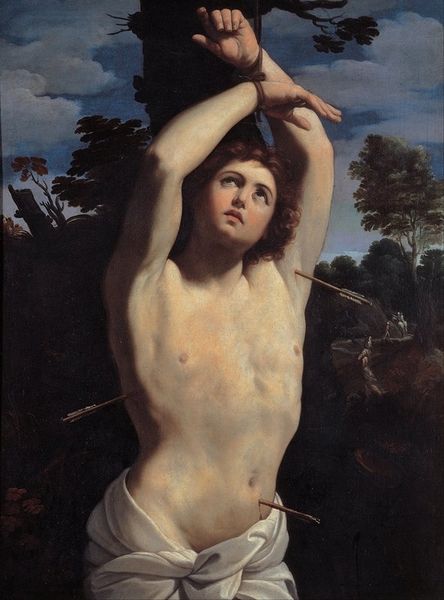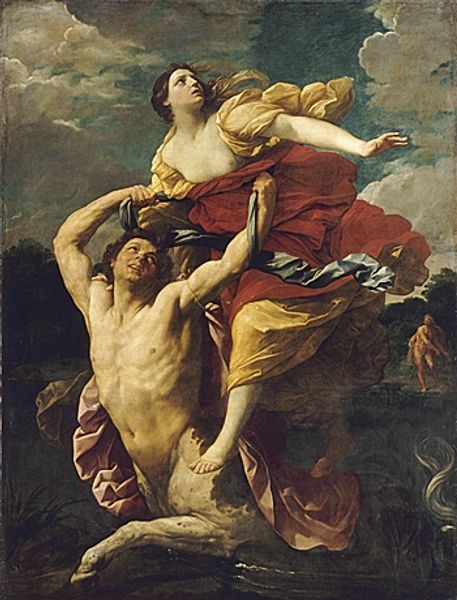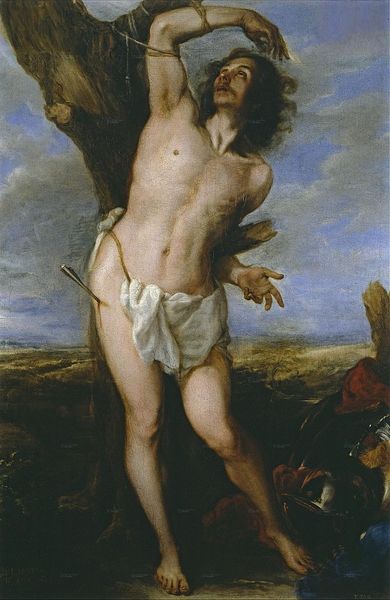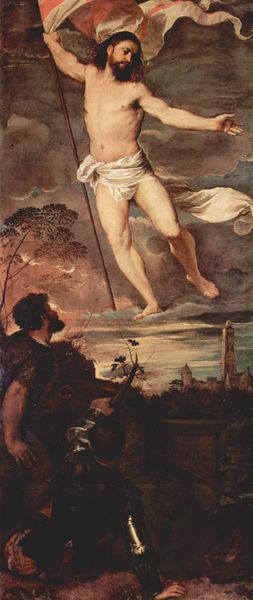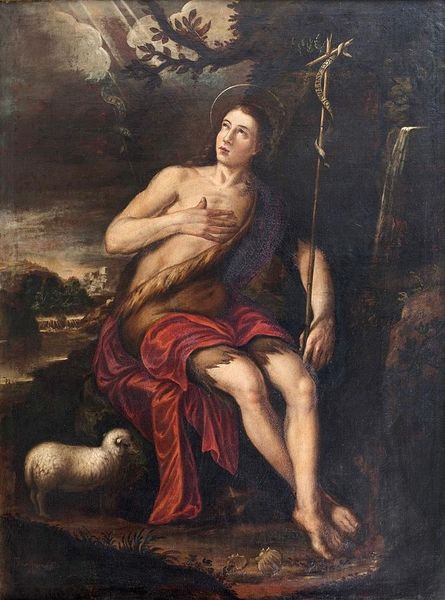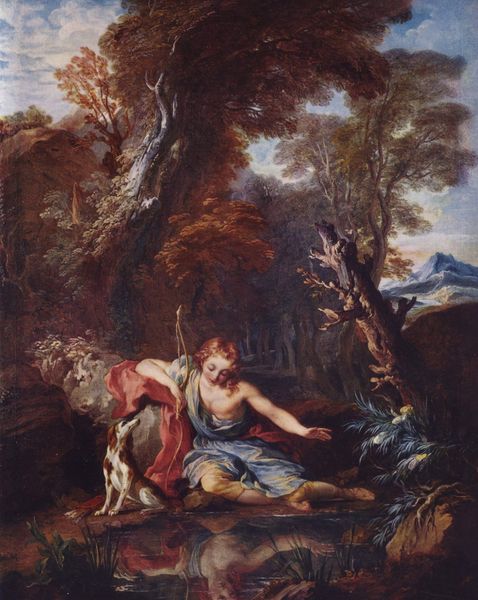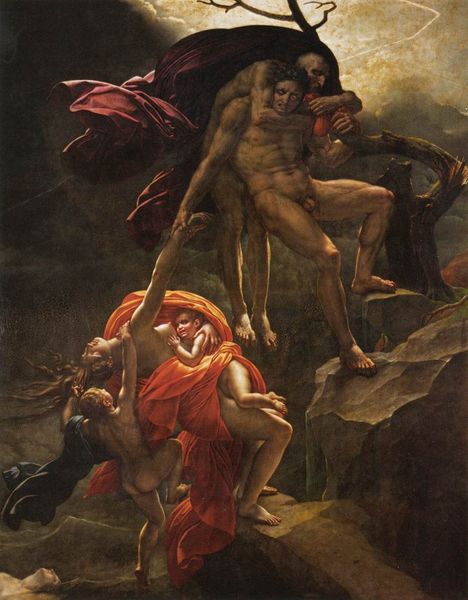
oil-paint
#
portrait
#
baroque
#
oil-paint
#
landscape
#
christianity
#
realism
#
christ
Dimensions: 198 x 184 cm
Copyright: Public domain
Editor: We’re looking at Jusepe de Ribera’s “St. John the Baptist in the Wilderness,” painted around 1635, in oil. There’s something serene and yet unsettling about the way John is rendered. How do you interpret this work, particularly in its historical context? Curator: The power dynamics embedded in this seemingly pious image are fascinating. Ribera, deeply rooted in the tumultuous political and religious climate of 17th-century Naples, presents John not as an ethereal figure, but as an embodied individual, roughened by the wilderness. Note how his gaze engages *us*. What does it mean to depict a religious figure with such raw physicality and directness during the Counter-Reformation? Editor: It feels very human. He is in nature. But I wonder how the use of light and shadow played into portraying social class or status? Curator: Exactly. Ribera's tenebrism doesn't just highlight John's form; it also obscures aspects of his identity. Think about who the intended audience was for this painting. How might their understanding of poverty, devotion, and social rebellion shaped how they view him? What stories is Ribera telling us about power and resistance in his world? Editor: It challenges this romantic notion of divinity being separate from hardship. It sounds like John, in a certain context, can reflect issues relevant beyond religion, for the contemporary world. Curator: Precisely. The painting serves as a site for interrogating the complexities of faith, resistance, and identity. By placing John firmly within a specific historical moment, Ribera invites us to confront uncomfortable truths about power and privilege that still resonate today. How might this painting disrupt or reinforce the established norms of the time? Editor: Seeing it through this lens makes me realize the power of art to communicate a more complicated story, to show more than it reveals on the surface. Curator: And to ask important questions about ourselves and society, yesterday and today.
Comments
No comments
Be the first to comment and join the conversation on the ultimate creative platform.
